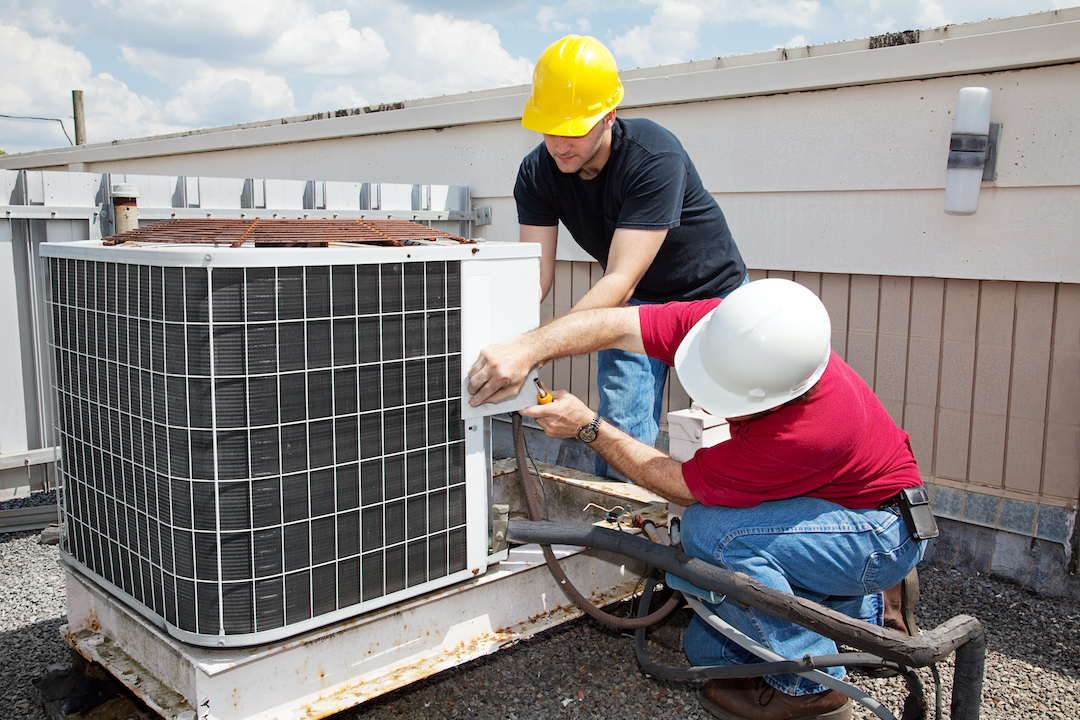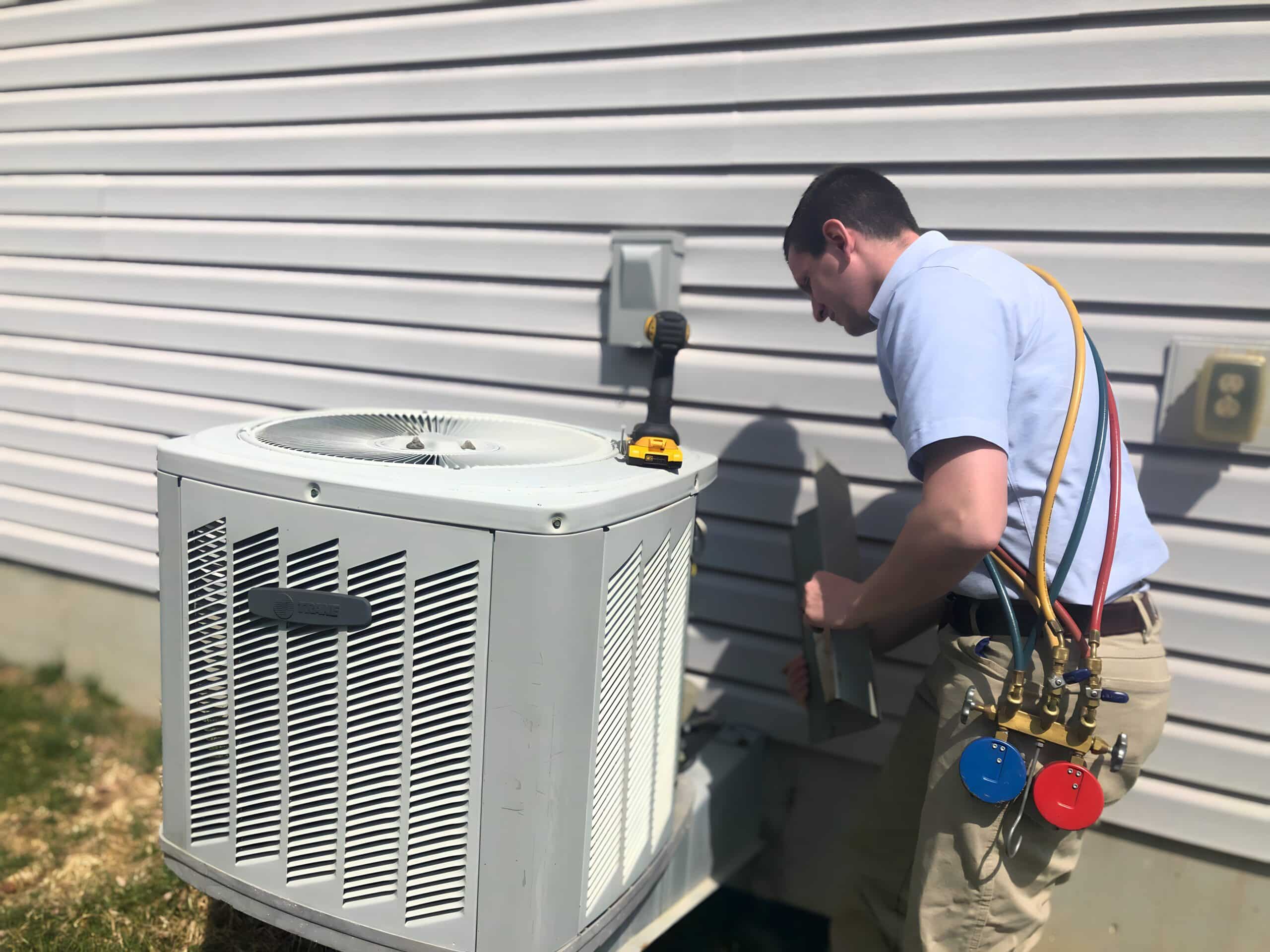Is It Time for ductless mini splits? Expert Opinions
Is It Time for ductless mini splits? Expert Opinions
Blog Article
Just How a Heatpump and Heater Job With Each Other to Maximize Your Home's Home heating Performance
Recognizing how a heatpump and furnace interact is essential for house owners looking for efficient heating services. Each system has its staminas, providing a balanced technique to home comfort. The warm pump masters modest temperatures, while the heater delivers quick heat during severe cold. This synergy not only reduces energy prices but also boosts the lifespan of both home appliances. What variables influence this cooperation, and just how can homeowners optimize their advantages?
Understanding Warmth Pumps: Just How They Function
Many individuals may be unknown with their internal functions, heat pumps play an important duty in modern-day home heating systems. These tools run by transferring warm from one location to an additional, utilizing the concepts of thermodynamics. In chillier months, a heatpump extracts heat from the outdoors air, ground, or water, and transfers it inside your home to warm the living room. On the other hand, throughout warmer months, it can turn around the procedure, serving as an air conditioning unit by getting rid of warmth from inside to the outside.Heat pumps contain an evaporator, compressor, expansion, and condenser shutoff. The cooling agent within the system soaks up warm as it vaporizes at reduced temperature levels and stress. The compressor after that enhances the stress and temperature of the cooling agent, allowing it to launch heat as it condenses. This efficient procedure can greatly lower power intake compared to standard heating approaches, making heatpump a lasting option for environment control in homes.
The Duty of Heaters in Home Heating
Furnaces play a crucial duty in home heating by offering a reliable resource of warmth during the chillier months. They operate by generating heat with combustion or electric resistance, distributing it throughout the home via air ducts or glowing systems. The performance of a heater is frequently measured by its Yearly Gas Usage Effectiveness (AFUE) rating, which indicates just how efficiently the unit converts fuel into heat.Furnaces can use numerous energy resources, consisting of natural gas, oil, electricity, or propane, enabling property owners to select the most ideal choice for their requirements. Unlike heatpump, which might battle in severe cold, furnaces maintain consistent efficiency, making sure that interior temperatures continue to be comfortable despite exterior problems. Additionally, modern-day furnaces typically come equipped with advanced innovation, such as smart thermostats and variable-speed blowers, improving their effectiveness and responsiveness. This flexibility makes heating systems a critical part in comprehensive home heating strategies.

Advantages of Making Use Of Both Solutions Together
Combining the strengths of both heating systems and heatpump can result in a much more efficient and reliable home heating service. Utilizing both systems permits home owners to take benefit of the heatpump's energy performance throughout milder temperature levels while depending on the furnace for more extreme cold problems. This twin method can substantially decrease energy costs, as warm pumps take in much less electrical power than conventional home heating approaches when temperature levels are moderate.Additionally, making use of both systems with each other can improve comfort levels in the home. Heatpump can provide constant, even heating, while heaters can rapidly increase ambient temperature levels when needed. In addition, the assimilation of both systems can expand the lifespan of devices by decreasing deterioration on each device, as they share the work. Eventually, home owners can appreciate a well balanced, cost-effective heating option that readjusts flawlessly to differing weather, making certain a cozy and inviting home throughout the cold weather.
Exactly How Warmth Pumps and Furnaces Complement Each Other
They develop a complementary home heating system that makes best use of performance and convenience when home owners integrate warm pumps and heaters. Heatpump run by transferring warm from the outside air or ground, making them very reliable in modest climates. They stand out during milder temperature levels, supplying economical heating. On the other hand, furnaces create warm via combustion or electric resistance, supplying strong, immediate warmth throughout extreme cool conditions.The mix of these two systems permits dynamic adjustments based upon temperature level changes. Throughout warmer months or milder winter season days, the warmth pump can take the lead, conserving power and reducing prices. As temperatures drop, the furnace can perfectly engage, making certain regular heat throughout the home. This harmony not only enhances power use however additionally improves the life-span of both systems, as each device operates within its perfect performance range. Together, they create a well balanced environment that adapts to varying climate demands.
Optimizing Performance: Tips for Homeowners
House owners can improve their heating efficiency via several practical approaches. Developing a normal upkeep schedule, integrating smart thermostat modern about his technology, and carrying out effective insulation and securing options are crucial steps. These procedures not only boost convenience however also minimize power expenses.
Routine Maintenance Schedule
To ensure optimal home heating performance, establishing a normal upkeep timetable is essential for any type of home. House owners ought to prioritize routine assessments of both heatpump and furnaces to ascertain peak performance. This includes furnace replacement altering air filters each to three months, as stopped up filters can substantially reduce effectiveness. In addition, organizing expert upkeep at the very least once a year allows specialists to determine and resolve potential issues before they escalate. Homeowners ought to additionally cleanse the warmth pump's exterior device to avoid particles accumulation that can hinder air flow. By adhering to a routine upkeep schedule, property owners not just improve their home heating systems' performance but likewise prolong their life expectancy, resulting in higher comfort and decreased energy costs throughout the cooler months.
Smart Thermostat Combination
Integrating a smart thermostat right into a home heating unit can substantially improve energy efficiency, particularly as it permits exact control over temperature setups. These devices can learn the house owner's timetable and choices, immediately changing the temperature to optimize convenience while lessening energy use. For example, they can reduce heating throughout times when the home is vacant, reducing unneeded intake. Numerous wise thermostats likewise supply real-time power usage data, allowing home owners to make enlightened choices regarding their heating practices. In addition, remote gain access to by means of smart device apps enables individuals to adjust setups from anywhere, making certain the home is warm upon return. On the whole, smart thermostat assimilation not only enhances comfort however substantially adds to energy financial savings and performance.
Insulation and Securing Solutions
Smart thermostats play an essential role in energy efficiency, yet their performance can be significantly improved by proper insulation and securing services. Property owners ought to prioritize shielding attics, floors, and wall surfaces to lessen warmth loss. Premium insulation products, such as spray foam or fiberglass, can considerably improve thermal resistance. Additionally, sealing spaces around windows, doors, and air ducts prevents chilly air seepage and warmth retreat. Weatherstripping and caulking are efficient methods for addressing these leaks - ductless mini splits. Normal examinations for air leakages, in addition to the usage of blower door tests, can aid identify issue areas. By purchasing insulation and sealing, house owners can enhance the performance of their heating systems, inevitably causing reduced power intake and lower utility expenses
Common Myths Concerning Warm Pumps and Furnaces
What misunderstandings border warmth pumps and furnaces? Numerous people wrongly think that heatpump are ineffective in colder climates. Actually, modern warm pumps are developed to run successfully even in reduced temperature levels, supplying reputable heating throughout wintertime. An look at these guys additional common myth is that furnaces are constantly a lot more effective than warmth pumps. Nevertheless, this relies on the specific power resources and efficiency ratings of the devices concerned. Some might additionally believe that making use of both systems simultaneously is unnecessary, but in truth, this combination can enhance home heating efficiency, especially throughout severe climate condition. Furthermore, individuals usually presume that heatpump need constant maintenance, when in reality, they have comparable maintenance needs to conventional home heating systems. By unmasking these misconceptions, house owners can make even more educated choices regarding their heating choices, inevitably causing enhanced convenience and energy effectiveness in their homes.
Upkeep Considerations for Combined Systems

Regularly Asked Concerns
Can Heat Pumps Job Effectively in Incredibly Cold Climates?
Warmth pumps can battle in incredibly chilly climates as a result of minimized performance and heat removal constraints. Innovations in technology have led to models developed for much better performance in such conditions, enhancing their feasibility in harsh atmospheres.
The Length Of Time Do Warmth Pumps and Furnaces Usually Last?
Heatpump typically last 15 to 20 years, while heaters have a life-span of 15 to 30 years. Routine upkeep can extend their long life, making certain reliable procedure and decreasing the requirement for early substitutes.

What Is the Ordinary Price of Setting Up Both Solutions?
The average expense of installing both a heatpump and a furnace normally varies between $5,000 to $10,000 - heat pump service. Aspects influencing this expense consist of system dimension, installation complexity, and local labor prices
Exist Tax Obligation Incentives for Using Energy-Efficient Heating Systems?
Lots of homeowners ask about tax rewards for energy-efficient heating unit. Numerous federal and state programs often provide credit scores or refunds, motivating the fostering of lasting modern technologies to reduce energy consumption and promote environmental duty.
How Do I Pick the Right Size Heat Pump and Heater?
Picking the right dimension heat pump and heating system entails determining the home's square video footage, taking into consideration insulation quality, and reviewing neighborhood climate. Consulting an expert can assure suitable system performance and power efficiency based upon certain needs. heat pump service. Understanding just how a warm pump and furnace job with each other is necessary for house owners looking for efficient heating remedies. In cooler months, a warm pump essences heat from the outdoors air, ground, or water, and transfers it indoors to warm up the living space. When property owners integrate warm pumps and heating systems, they produce a corresponding heating system that maximizes efficiency and convenience. Warm pumps run by moving heat from the outdoors air or ground, making them very efficient in modest climates. Warmth pumps can battle in exceptionally cool climates due to lowered effectiveness and warm extraction limitations
Report this page